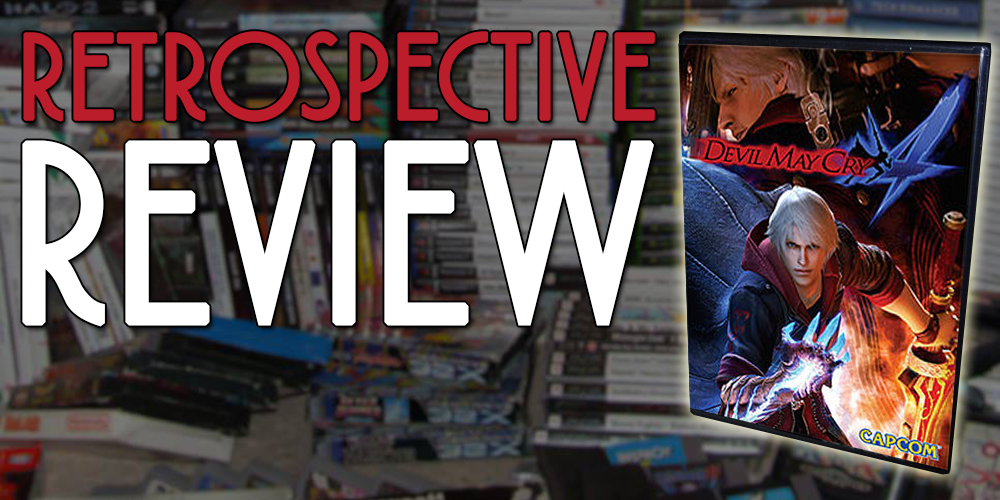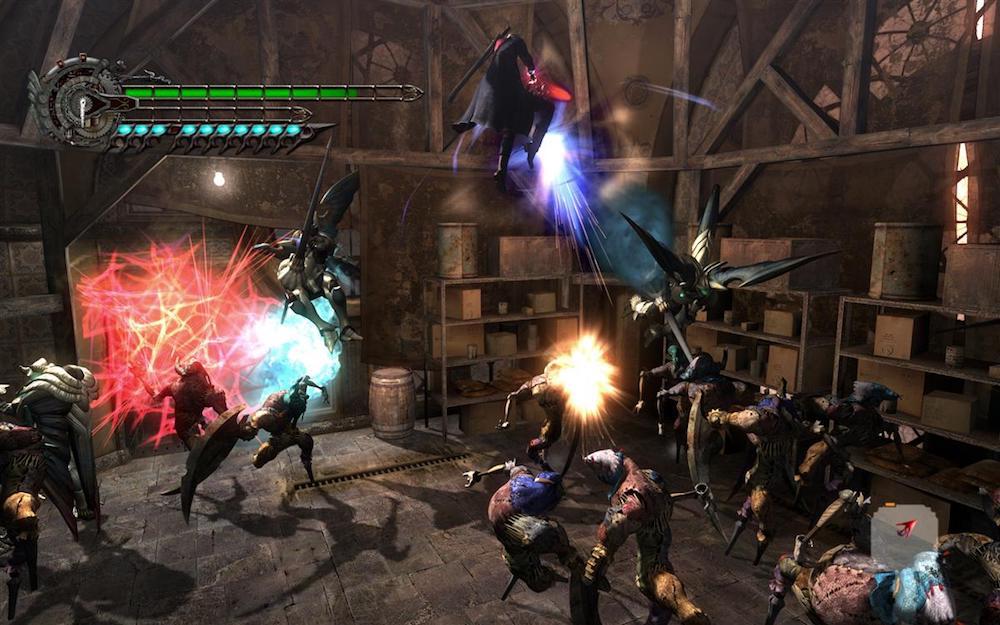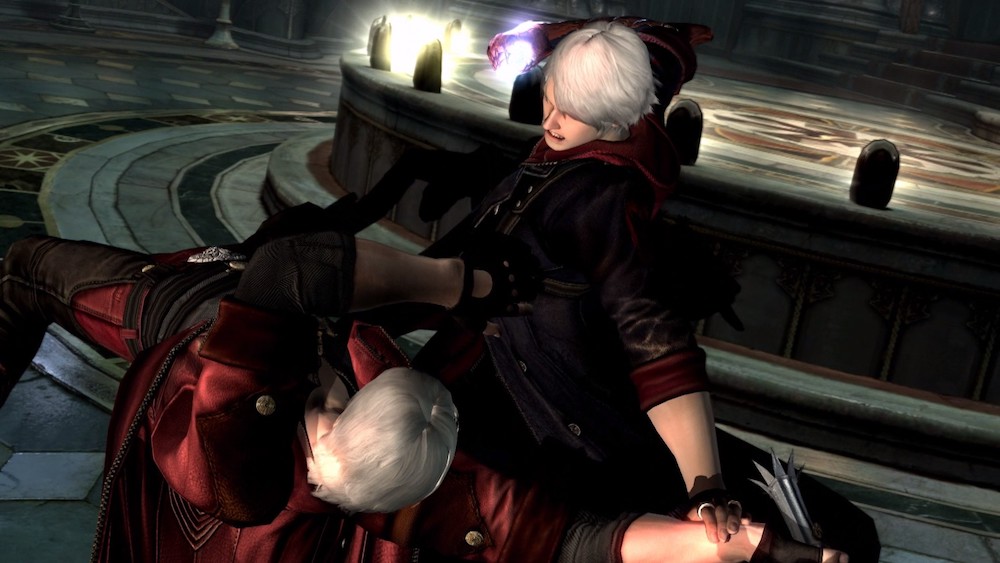
When I think of hack n’ slash action games, the first thing that pops into my head is a cheeky and charismatic protagonist. When I think back on why this is, I credit it to the key games that got me into the genre, Devil May Cry 3 and Bayonetta. Dante has an undeniable level of cool about him, and DMC3 quickly became the gold standard for not only action games, but the protagonists featured in them. It’s with this idea alone that put a mighty task in the hands of Capcom to deliver something bigger and better with DMC4, and they somehow succeeded in delivering what I believe is the best Devil May Cry game to date.
Capcom took a risk straight out of the gate by introducing Nero, making for two primary protagonists throughout DMC4’s narrative. Nero lives in the city of Fortuna, home to The Order of The Sword. During the festival of The Sword, Dante attacks and kills a religious figure, Sanctus, framing Dante as a primary antagonist, and setting the events of the story into motion as a demonic power is awakened within Nero, transforming his entire right arm.

It’s a typical run of the mill DMC story from there, but that’s not a bad thing. The script is filled with quirks, snarks, and quips from both Dante and Nero, but the contrast between their personalities makes them different enough to make Nero feel like a significant addition to the universe and its lore. Dante is still as snarky as ever, but that’s not to say Nero doesn’t give him a run for his money. They’re both likeable, and the effort that Capcom has put into their depth and development is refreshingly present. The twists, turns, and story beats aren’t anything to gawk at, but the simplicity of it all means the action, gameplay, and design comes first and foremost.
DMC4 features a total of 20 missions, 10 as Nero, and 10 as Dante. In theory, this sounds like an even balance for both, and it is, but the biggest problem is that the 10 missions you play as Nero are almost identical to the 10 you play as Dante, even down to the boss fights. It never feels like a slog due to how differently the protagonists play, but it does feel lazy and half-baked. Thankfully, missions are kept short and sweet, usually including some light platforming, puzzle-solving, and world-building in between the cathartic combat sequences the series is known for.

DMC4’s combat is mostly the same as games past, but the main differences come in the form of Nero’s different weapons and abilities. The Red Queen is Nero’s equivalent of Rebellion, half sword, half chainsaw, it’s over the top in the best way possible, and is deceptively deep beyond its basic combos. The Red Queen can be revved for empowered attacks and additional effects on its abilities. With immaculate timing, you can rev between hits, which is by no means necessary, but an incentive to get better that rewards skilled play. The Devil Bringer is Nero’s transformed right arm, allowing him to perform various grapple attacks, counters, and combo extensions. These pieces of equipment alone make Nero feel like his own character and separates his combat flow compared to Dante’s, and that’s not including the other unlockable weapons.
Dante plays almost identically to how he does in DMC3 with one small but meaningful change. He can now change between his 4 different fighting styles on the fly as opposed to bringing up a menu and swapping manually. It makes for a much smoother flow of combat and combo chaining, and it is immensely satisfying to learn its intricate nuances. Both Dante and Nero have ranged options in the form of Ebony and Ivory, and the Blue Rose respectively, creating for further juggling opportunities and endless amounts of style.

Combos and the overall flow of combat is the best it’s ever been. Zipping from enemy to enemy, launching them into the air and bringing them back down with a heavy-handed downward slash never gets old (especially if you end it with a taunt), and this translates to boss fights. There are obvious standouts like Credo and the one-on-ones with Dante, but all of them are challenging, rewarding, and generally well-designed. Apt use of dodging, devil trigger, and various weapons for specific situations is key to winning. It never feels unfair or overly difficult, and playing on hard feels like a balanced amount of challenge for someone familiar with the series or action games in general, but if you’re a newcomer, I’d highly recommend starting on normal.
DMC4’s visuals are a mixed bag of results. Textures aren’t very detailed which is standard for a game of its time, but character models and particle effects are beautiful. The flare of the Red Queen after each rev or the bright blue aura that continually surrounds the Devil Bringer both look gorgeous, and it’s clear that the attention to detail was focused into the things you’ll be looking at most. Due to the speed of the combat, most of the ugly background textures are easy to ignore, and the most crucial part, performance, is flawlessly smooth and consistent.

There’s no doubt DMC4 had a colossal task on its hands after the success of DMC3, and it delivers on all the levels that matter when it comes to a DMC game. The introduction of Nero is a fruitful one, and the contrast between him and Dante makes him feel like his own character within the universe. Most importantly, though, there are lots of small but impactful improvements to gameplay that make it a better game to play overall. Sure, some of the texture work isn’t great, and retreading the same ground in the second half is a design choice that won’t resonate with everyone, but, ultimately, DMC4 is a excellent entry in the series that undoubtedly gives DMC3 a run for its place on the throne.











